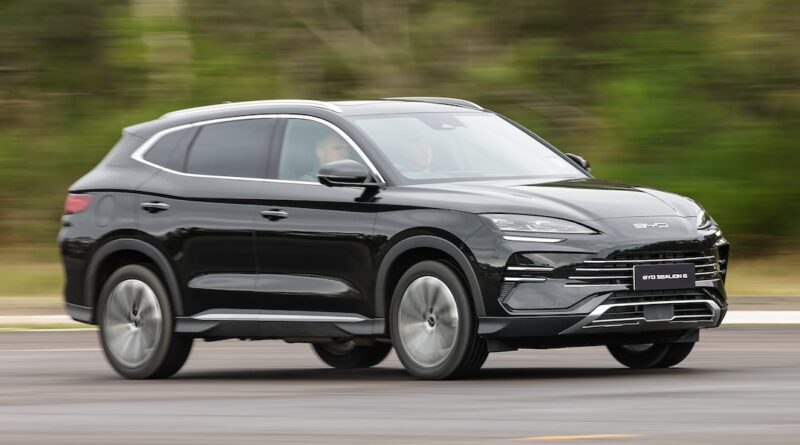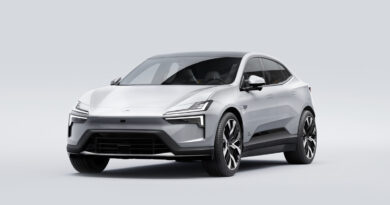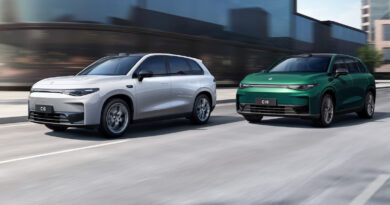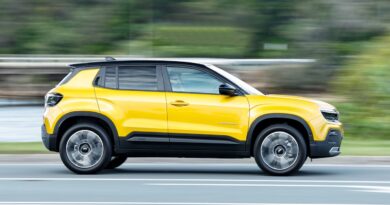2024 BYD Sealion 6 PHEV review: Is this the new Chinese medium SUV that knocks over the Toyota RAV4 hybrid?
The whirlwind that is BYD’s Australian journey has dropped yet another model on local shores, the Sealion 6 medium SUV.
It’s a significant arrival for a couple of reasons. Firstly, it lands the Chinese maker in Australia’s biggest sales segment and, as a plug-in hybrid, it is BYD’s first ICE-powered, CO2-emitting vehicle to go on sale here following the launch of three BEVs since 2022 – the Atto 3, Dolphin and Shark.
With sales projected around 20,000 per annum, the local BYD distributor EVDirect has enormous expectations for the Sealion 6. It is a cornerstone of its stunningly bold triple-double sales objectives and eventual targeting of Toyota as Australia’s top-selling brand.
But Australians have shown little interest in PHEVs up to now, preferring plugless hybrids and pure BEVs … if they are interested in electrification at all.
So there’s definitely a lot of work to be done here.
2024 BYD Sealion 6 price and equipment
Okay, so if you are wondering what the Sealion 6 is, until very recently it was to be known as the Seal U in Australia.
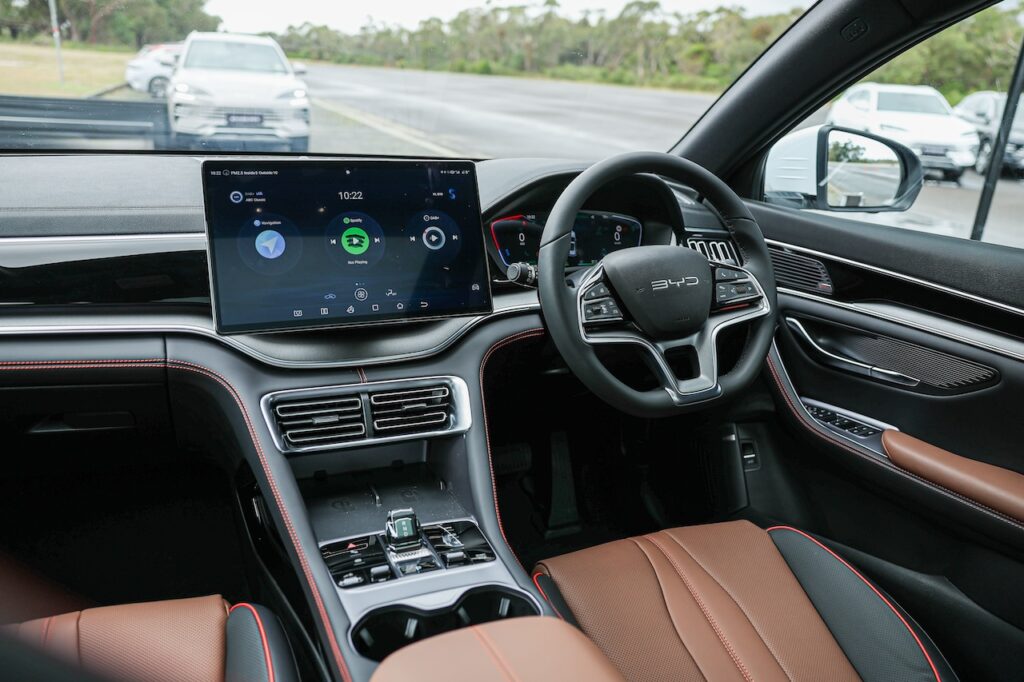
But a desire to separate its identity from the electric Seal sedan prompted the change.
We’ve previously covered that issue off, why EVDirect is taking the punt on PHEVs and dived in detail into the Sealion 6 pricing and specification. It’s all in the links below:
READ MORE: What’s in a name? 2024 BYD Seal U rebranded BYD Sealion 6 ahead of Australian debut
READ MORE: Emissions gamble: Why electric car-maker BYD is adding ICE in Australia with the 2024 BYD Sealion 6
READ MORE: 2024 BYD Sealion 6: Everything you need to know about BYD’s first plug-in hybrid SUV in Australia
So considering how extensive our coverage already has been, we won’t reprise too much beyond the spec basics here.
There are two models, the $48,990 front-wheel drive Dynamic and the $52,990 all-wheel-drive Premium (all prices plus on-roads). That pricing comfortably undercuts the Sealion 6’s most logical rival, the Mitsubishi Outlander PHEV and makes it competitive against the top-selling Toyota RAV4 plugless hybrid.
Both Sealion 6s have five seats, a 1.5-litre four-cylinder petrol engine and an 18.3kWh BYD ‘Blade’ LFP battery.
The Dynamic has a single e-motor up-front, while the Premium adds turbocharging to the ICE and another e-motor at the rear.
All the key performance specs are at the bottom of this story, but in essence the Sealion 6 uses BYD’s fourth generation DM-i (Dual Motor-intelligence) PHEV system to deliver claimed electric running heading north of 80km-90km (based on slacker NEDC ratings) and combined range around 1000km.
Essentially, the lower-powered Dynamic can go further, the higher-powered Premium can go faster.
Outside the mechanical stuff they stack up very closely on equipment. They both get 19-inch alloy wheels, a panoramic sunroof, synthetic leather interior trim, the signature BYD rotating screen, comprehensive infotainment (including karaoke!) and safety equipment and vehicle-to-load charging. The Premium alone adds a head-up display.
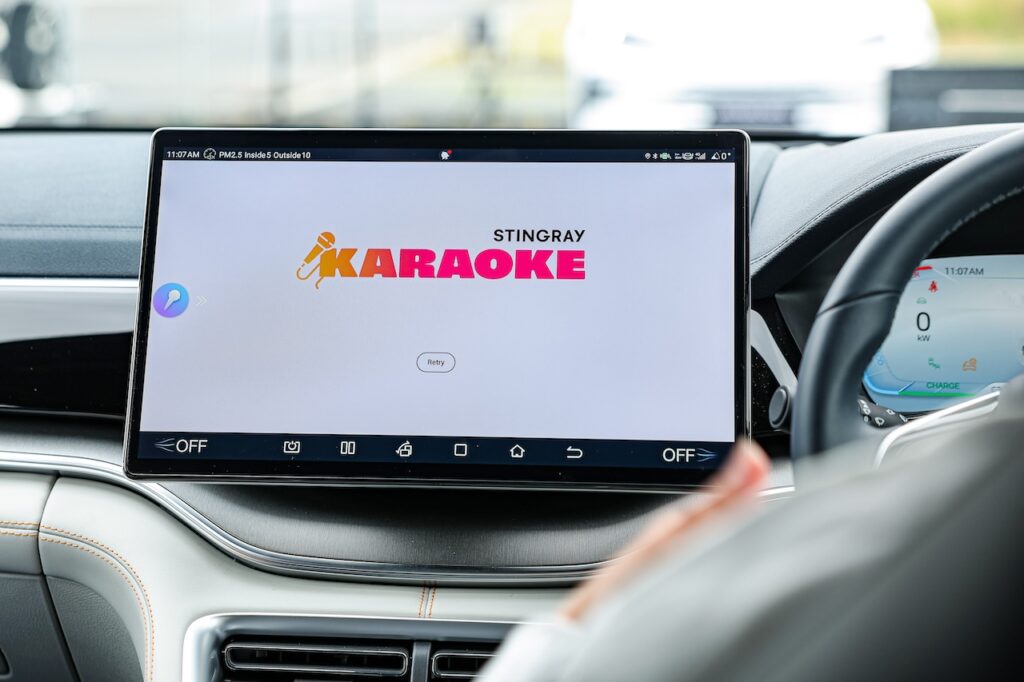
The vehicle warranty is six years/150,000km, the battery warranty eight years/160,000km, service intervals are 12 months/20,000km and the first five services will cost $1600 in total.
2024 BYD Sealion 6: What we think
Jump in the 2024 BYD Sealion 6 Premium and first impressions are plush and luxurious; big screens, soft coverings. Only graunchy reach and rake adjustment on one car’s steering column hinted at a quality shortfall.
It doesn’t have the idiosyncratic nautical theme of the Atto 3, instead it’s a modern and enticing presentation, typical of Chinese car makers.
That’s backed up by comfortable if flat power-adjustable front seating and a spectacular amount of room, for even tall passengers, in the rear seat, which is raised for better viewing, and reclines but does not slide.
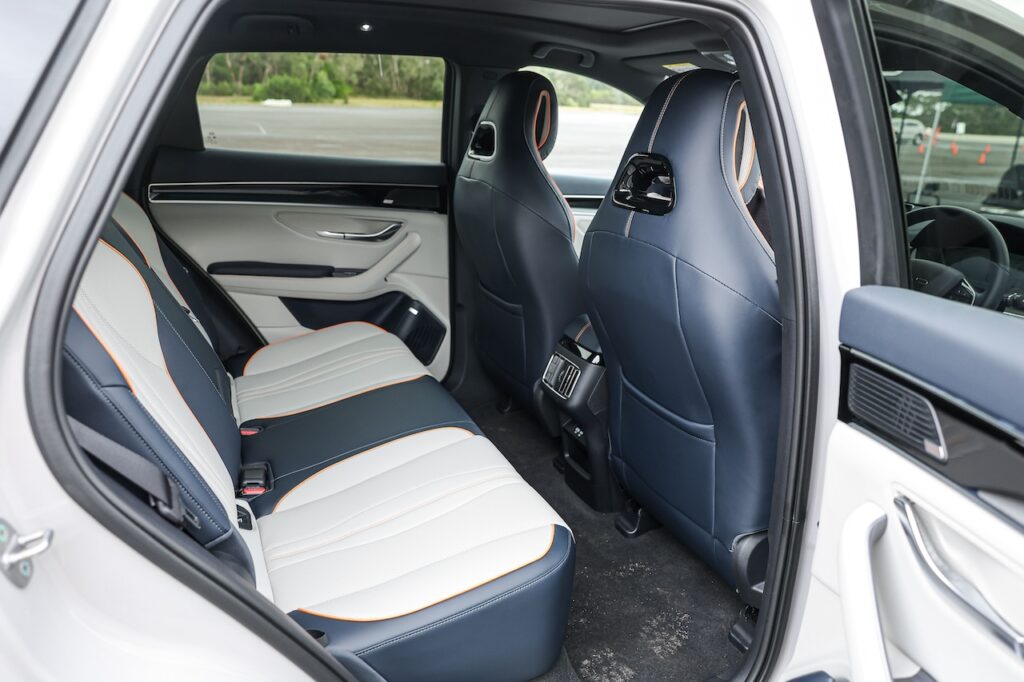
There’s plenty of in-cabin storage, double smartphone wireless chargers up-front and USB ports front and rear.
The letdown is the 425 litre boot, which is under-sized compared to opposition such as the Toyota RAV4. It does expand out to 1440 litres with the rear seat folded. But you won’t find a spare tyre, just a repair kit.
Our first drive was restricted to the old Holden proving ground at Lang Lang in Victoria, so it didn’t cover the full gamut of driving conditions; there was very little stop-start, which is where hybrids do their best work.
But it did provide the chance to understand the Sealion 6 basics and they seem to work pretty well.
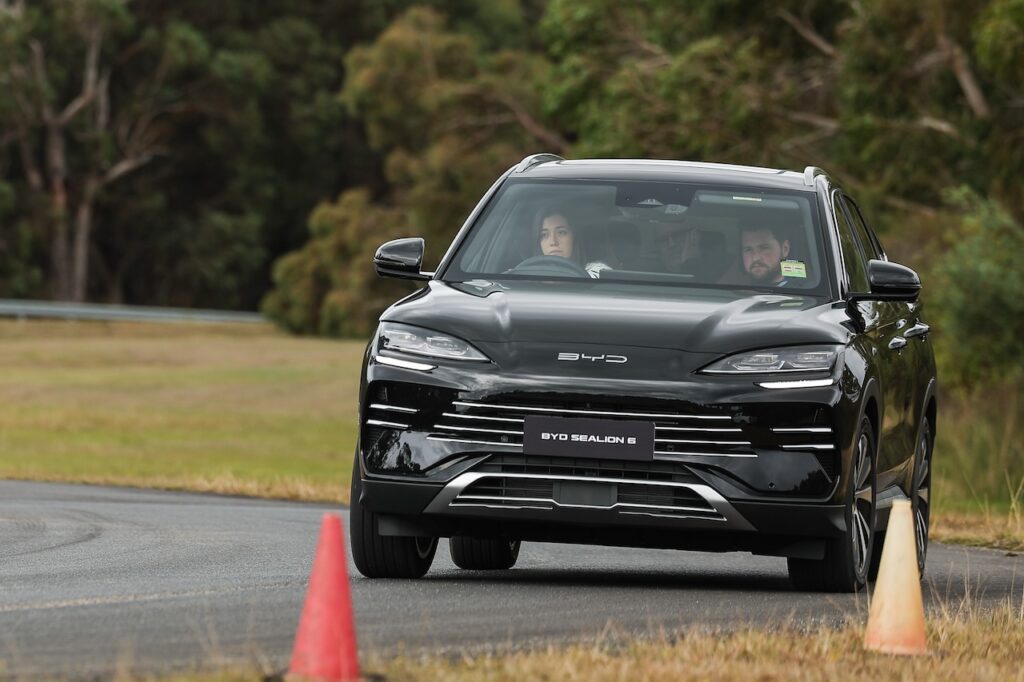
The powertrain wants to run in electric-only (series hybrid mode) as much as possible, but the driver can choose parallel mode so the engine is on call, chiming in when more power is required. There are also three drive modes – Economy, Normal and Sport.
The petrol engine primarily acts as a range extender, so it is mostly droning away in a steady state in the background no matter what your left foot is doing.
It does get actively involved in driving the wheels at high speed, under higher load such as towing on a hill or when the battery is depleted. The driver can also set the battery state of charge for when the ICE chimes in.
That’s when the silly official fuel consumption claim is exposed for the fantasy it is.

BYD’s argument is most Aussie only drive 30km per day on average so they might never use any fuel. And if they travel a longer distance they won’t suffer from recharging anxiety because the ICE is there as a backup.
As smoothly integrated as the powertrain experience is, the Sealion 6 Premium does not feel like a vehicle with 228kW and 550Nm, nor one capable of dashing from rest to 100km/h in 5.9 seconds as claimed.
It’s solid, but just not that strong.
The rest of the driving experience is reminder that Chinese manufacturers still have some way to go when it comes to the fine-tuning of ride, handling and steering.
The Sealion 6 has had local testing and tuning and is set up to be soft and comfortable, which means there’s noticeable body roll in corners. The steering is adjustable through two modes, but is light in either. So it’s better for tighter urban work, which makes sense.
In its class it’s well behind the best drives such as the Kia Sportage and Nissan X-Trail, but at first taste it also feels more composed than the fellow-Chinese GWM Haval H6, Chery Tiggo 7 and MG HS.
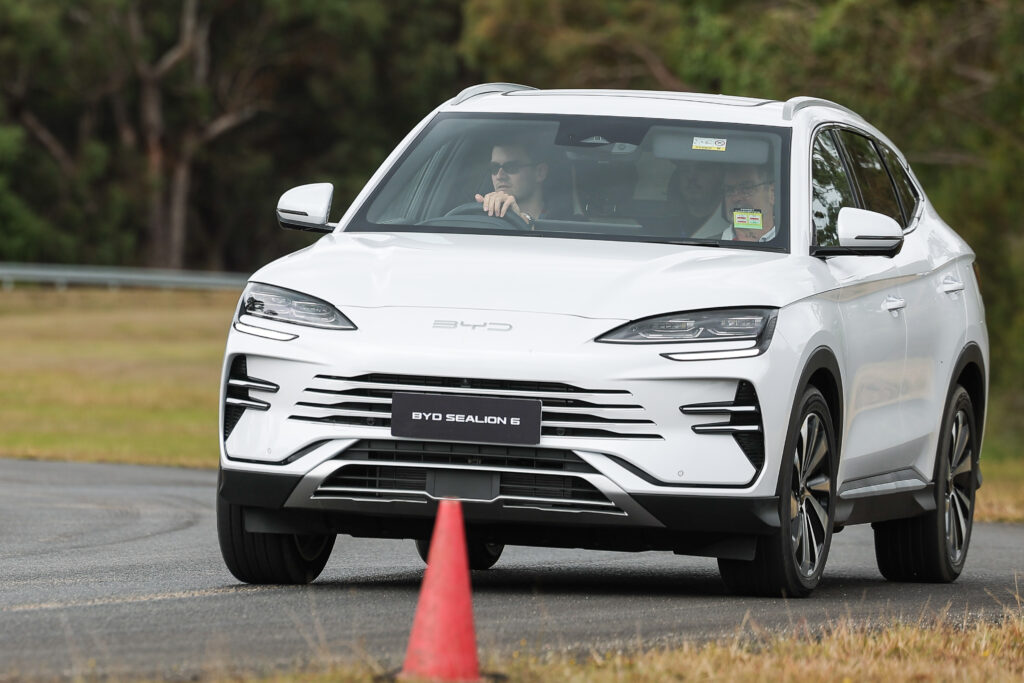
By Chinese standards the lane-keeping system is quite subtle in its interventions. During hands-free autonomous testing there was never any binging and bonging to grab the steering wheel – which was nice but illegal. A fix was scheduled ahead of on-sale.
2024 BYD Sealion 6: Verdict
The 2024 BYD Sealion 6 has an impressive powertrain, plenty of equipment and a price that makes it competitive against key rivals such as the upper-end of the RAV4 line-up.
At first taste – and more driving is definitely needed – it feels competent to steer and quite comfortable to ride in. But dynamically there are better vehicles in the segment.
The question is will Aussies finally take the opportunity presented by the Sealion 6 to embrace PHEV tech in big numbers? And will the enthusiasm generated for BYD among EV fans translate to a broader audience?
It seems like a tough challenge, but in just a couple of years since making Aussie landfall the BYD whirlwind has taught us anything is possible.
SCORE: 3.5/5
2024 BYD Sealion 6 Dynamic specifications
Price: $48,990 (plus on-road costs)
Basics: Petrol-electric hybrid, 5 seats, 5 doors, medium SUV, front-wheel drive
Range: 92km (electric) 1092km (combined)
Battery capacity: 18.3kWh LFP
Powertrain: 1.5-litre four-cylinder petrol-electric
Output: 72kW/122Nm (electric motor: 145kW/300Nm)
Combined output: 160kW/300Nm
Transmission: Single speed CVT
Fuel consumption: 1.1L/100km (ADR Combined)
CO2: 24g/km (ADR Combined)
Energy consumption: 16.9kWh/100km
AC charging: 7kW
DC charging: 18kW
2024 BYD Sealion 6 Premium specifications
Price: $52,990 (plus on-road costs)
Basics: Petrol-electric hybrid, 5 seats, 5 doors, medium SUV, all-wheel drive
Range: 81km (electric) 961km (combined)
Battery capacity: 18.3kWh LFP
Powertrain: 1.5-litre four-cylinder turbocharged petrol-electric
Output: 96kW/220Nm (electric motor front: 150kW/300Nm; electric motor rear: 120kW/250Nm)
Combined output: 238kW/550Nm
Transmission: Single speed CVT
Fuel consumption: 1.4L/100km (ADR Combined)
CO2: 32g/km (ADR Combined)
Energy consumption: 17.9kWh/100km
AC charging: 7kW
DC charging: 18kW

